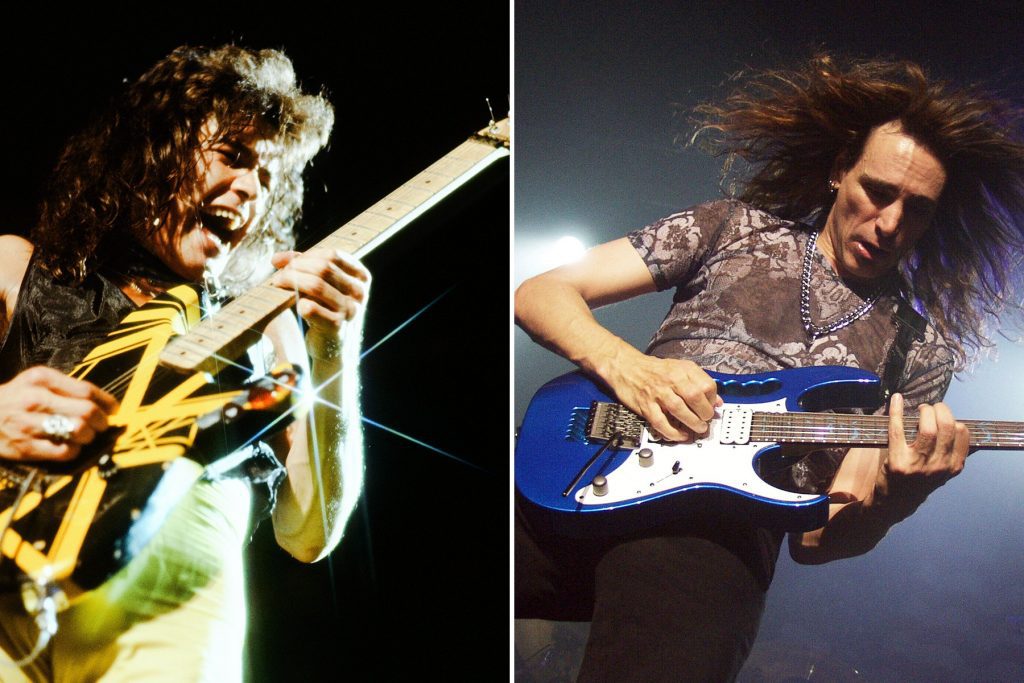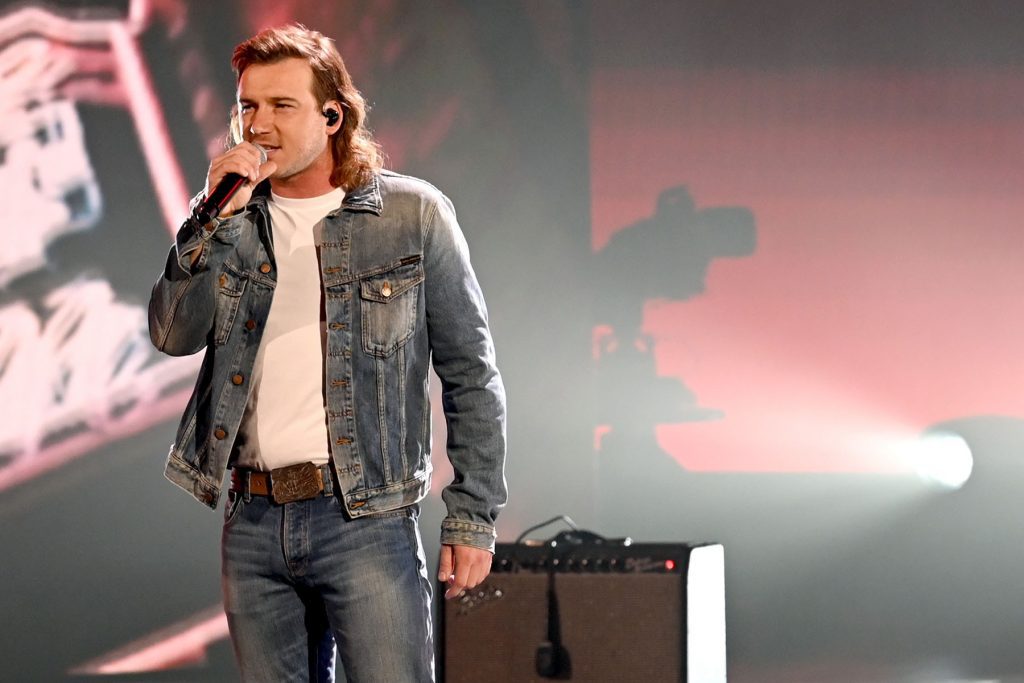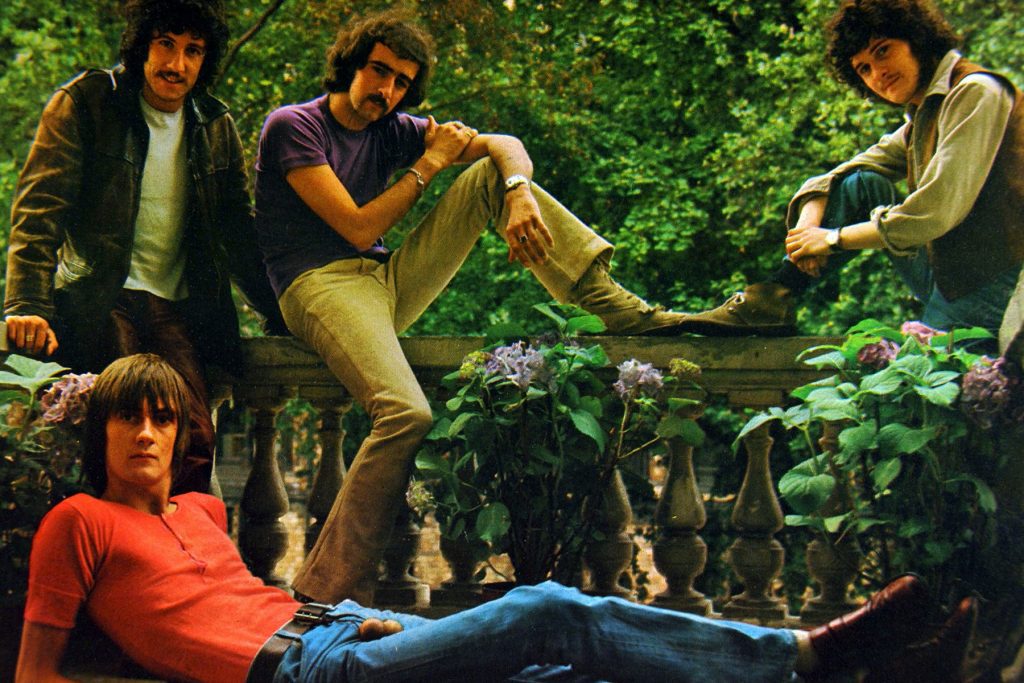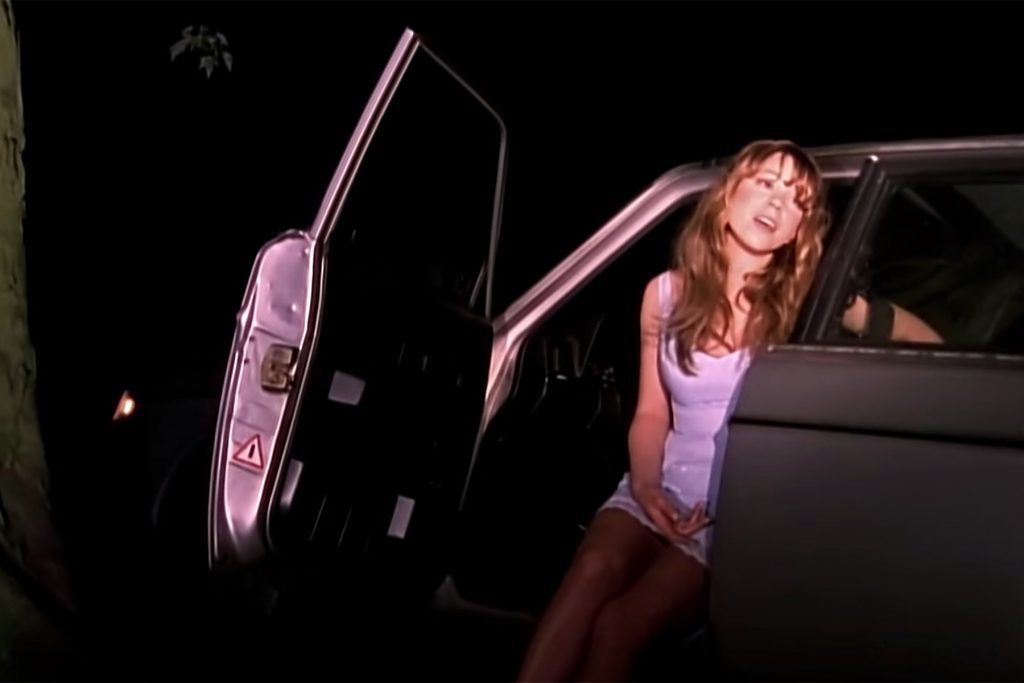
Steve Vai on Getting to Know the Real Eddie Van Halen
Steve Vai and Eddie Van Halen were not the most likely of friends. After David Lee Roth acrimoniously left Van Halen in 1985, Roth recruited Vai — an Eddie Van Halen–inspired, finger-tapping virtuoso — for his solo band. Vai played on Roth’s albums Eat ‘Em and Smile and Skyscraper – and tackled Eddie Van Halen’s guitar parts on tour. That created a bit of awkwardness between Vai and his guitar hero, Van Halen. But the day Vai left Roth’s band in 1989, Eddie called him up. It was the beginning of a deep friendship. Here, Vai tells the story.
I was fortunate that I had a really great personal relationship with Edward. You know, one of the things you discover when you got close with him is there was a soft side. And he had an incredible sense of humor. He was very witty, very excited when he was doing things that he was excited about. He was very simple; he was kind of like a MacGyver. He kept putting things together with tape, with bubblegum, and he would make it work. And it would just always sound so good.
blogherads.adq.push(function () {
blogherads
.defineSlot( ‘medrec’, ‘gpt-dsk-tab-article-inbody1-uid0’ )
.setTargeting( ‘pos’, [“mid-article”,”mid”,”in-article1″,”mid-article1″] )
.setSubAdUnitPath(“music//article//inbody1”)
.addSize([[300,250],[620,350],[2,2],[3,3],[2,4],[4,2]])
;
});
The first time I met Edward, I went to see Allan Holdsworth perform at the Roxy, and Edward came out and played. I went backstage and talked to him and I told him I was working with Zappa. And he was a Zappa fan, so I gave him my number and said, “If you ever want to meet Frank, let me know.” And oddly enough, the next day, my roommate said, “Ed Van Halen called.” I gave him Frank’s number. Then the phone rings, and it’s Frank. And he says to me: “Hey, sport, Edward Van Halen is here, come on up.” And I went up to the house and the three of us sat there all day and listened to music and jammed. He was amazing back then. He picked up this one guitar, and the nut was a little too shallow, so the string was buzzing. He found this huge screwdriver and [stuck it] underneath the nut. The screwdriver was sticking out like a foot and a half, and we were jamming like that, and he made it work.
The day after I left David Lee Roth’s band [in 1989] — I don’t know how Edward found out — but he called me. That was the start of a nice relationship and friendship. For about six months, we actually hung out a lot together, and I got to know the guy.
I saw his studio. He played me all these tapes. He was constantly writing and playing. He played me stuff that was never released, but it was so Edward. I said, “Why don’t you make a solo record?” and he always felt that the Van Halen records were his solo records. But this stuff he was playing me was really quite nice. It was all the things we loved about the way he played.
This would be a very interesting story for guitar players, I think: I was at my house in Hollywood, and in my studio, I was using my guitar, my rig, my pedals, my amps. And Edward came in. We were just hanging out and talking, and he says to me, “Let me show you this one thing I was working on.” And he takes my guitar and he starts playing and I realized instantly that it was Edward Van Halen. It didn’t sound anything like me. It had that “brown sound.” It was everything we love about Ed’s tone. He was playing my exact gear, and it sounded like him.
We’d go and play softball on Saturday mornings with his brother and a bunch of guys. It was great. I remember he said something very interesting: “I thought I was going to dislike you,” something to that effect.
When I joined David Lee Roth’s band, it was great opportunity for me to play such well-constructed rock songs. They were just a dream. Of course, nobody can play them like Edward, but you do your best. To be on stage with Dave playing those songs was quite a hoot. I liked doing “Unchained,” because it was tuned down. Very heavy. “Pretty Woman” was such a beautiful melody. And “Panama” was always a hoot too. And, of course, “Hot for Teacher.”
blogherads.adq.push(function () {
blogherads
.defineSlot( ‘medrec’, ‘gpt-dsk-tab-article-inbody2-uid1’ )
.setTargeting( ‘pos’, [“mid-article2″,”mid”,”in-article2″,”mid-article”] )
.setSubAdUnitPath(“music//article//inbody2”)
.addSize([[300,250],[300,251],[620,350],[2,4],[4,2]])
;
});
Of course, I could never play like him. I never tried. Only an idiot competes with Eddie Van Halen. But I knew that going into it. But when you’re playing that stuff and you’re a guitar player, you see the infrastructure of it. It’s just so beautiful. I remember making Eat ‘Em and Smile and we were working with Ted Templeman and he played me just the naked tracks of Edward’s guitars, and even just one track, one microphone of Edward’s guitar just sounded like an orchestra. Perfectly packaged in this powerfully dynamic expression.
One of the things that you start to recognize when you’re hanging out with people as famous as that is they have to put up certain barriers to protect their privacy, as well as their sanity. Edward had to create a barrier of sorts. But when you were let in — meaning, if he felt like you were good company and you resonated with him — then he wasn’t a rock star by any means. He was a really fun, funny, creative, simple guy. You‘d think you were hanging out with a friend down the street.
“I could never play like him. I never tried. Only an idiot competes with Eddie Van Halen.”
He was able to touch us through his inner ear. The songs were obviously simple, in a sense, but just so touching. You can hear the sweetness of his personality — sure he could be pretty intense sometimes, too — but that certain sweetness that I knew in his personality, I hear it, just even in the chord changes to “Jump,” you know?
Why did he stop releasing music? Well, I can’t say, but if I was to try to answer that question based on how my own sort of workloads have evolved through time, I might say that he kept himself busy, but other things became more interesting. And I think that he was really battling for his life.
I heard the rumors many years ago. We all kind of knew [he was sick] 10 years ago, and then I just followed the touch-and-goes that happened through the decade, and then toward the end — when there was talk that it was getting really serious — I spoke to some people that I knew. It was serious and then it wasn’t.
We’re very different kinds of people, though; we’d kind of drifted apart. I haven’t seen him in seven years or so. The last time I saw him was backstage at a Motörhead concert years ago. He was not really looking good, and he was going through some funk, but that smile was still there.
What did we lose? I like to think about it as what we gained. Everything in this world is coming and going. We just don’t know when it’s going to go, and if it does, it just means we went before it. I like talking about contributions he made because it was monolithic. I did an interview with you guys years ago, when I was asked who the game changers were. If I had to use my intuition, it’s Hendrix, it’s Van Halen, in rock guitar. So many great guitarists came along and contributed, but those guys just did something for us that reshaped not just the way we played instruments, but the way we write the music, the way we dress, and the way we act onstage. It goes really deep. So I firmly feel that he was one of those monoliths.
blogherads.adq.push(function () {
blogherads
.defineSlot( ‘medrec’, ‘gpt-dsk-tab-inbodyX-uid2’ )
.setTargeting( ‘pos’, [“mid”,”mid-articleX”,”in-articleX”,”mid-article”] )
.setSubAdUnitPath(“music//article//inbodyX”)
.addSize([[300,250],[300,251],[3,3],[620,350]])
.setLazyLoadMultiplier(2)
;
});
I feel the shock and the loss of the entire guitar community. I just want to say let’s focus on all that he gave us, because it truly was a gift. And he was brilliant.




